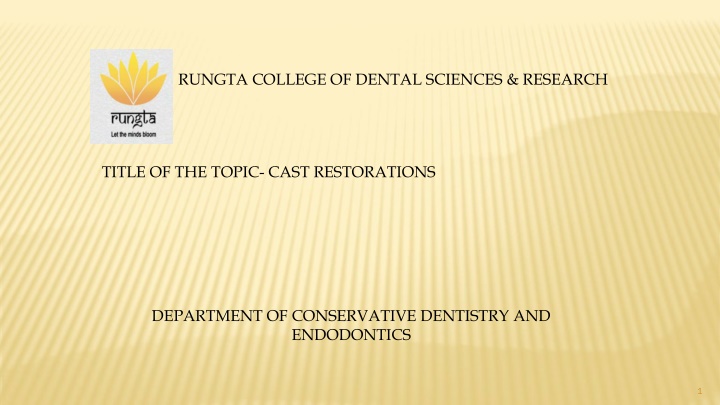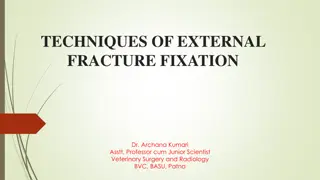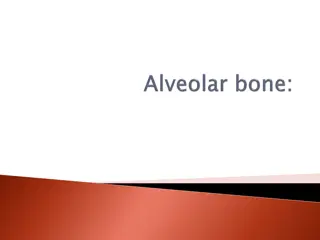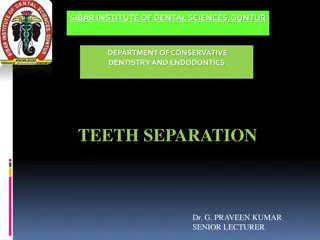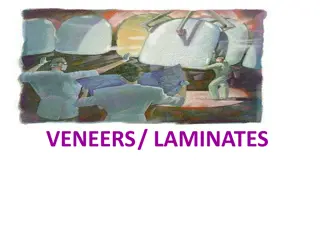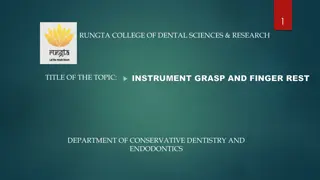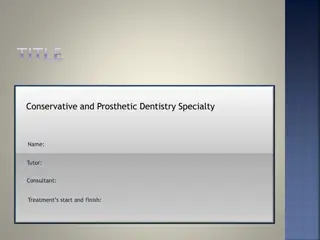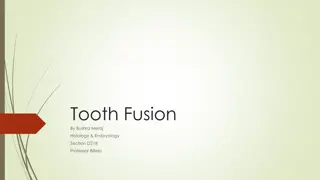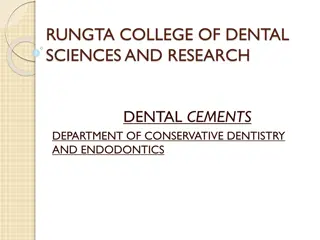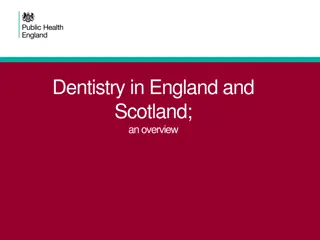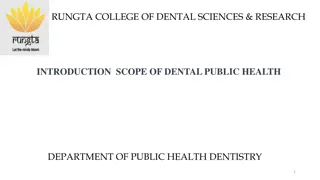Tooth Preparation for Cast Restorations in Conservative Dentistry
This presentation covers the process of tooth preparation for cast restorations in conservative dentistry, including historical perspective, indications, disadvantages, and techniques involved. Learn about bevels, margins, flares, and preparation for metal and ceramic inlays and onlays. Understand the importance of restoring dental health and function through proper tooth preparation.
Download Presentation

Please find below an Image/Link to download the presentation.
The content on the website is provided AS IS for your information and personal use only. It may not be sold, licensed, or shared on other websites without obtaining consent from the author.If you encounter any issues during the download, it is possible that the publisher has removed the file from their server.
You are allowed to download the files provided on this website for personal or commercial use, subject to the condition that they are used lawfully. All files are the property of their respective owners.
The content on the website is provided AS IS for your information and personal use only. It may not be sold, licensed, or shared on other websites without obtaining consent from the author.
E N D
Presentation Transcript
RUNGTA COLLEGE OF DENTAL SCIENCES & RESEARCH TITLE OF THE TOPIC- CAST RESTORATIONS DEPARTMENT OF CONSERVATIVE DENTISTRY AND ENDODONTICS 1
SPECIFIC LEARNING OBJECTIVES At the end of this presentation the learner is expected to know ; Core areas* Core areas* Domain Domain ** ** Category # Category # Introduction Definition Techniques Cognitive Cognitive Psychomotor Nice to know Must know Must know *Subtopic of importance ** Cognitive, Psychomotor or Affective # Must know , Nice to know & Desire to know ( Table to be prepared as per the above format ) 2
CONTENTS Introduction Historical Perspective Indications & Contraindications Advantages & Disadvantages Tooth preparation for Cast Restorations General Principles Bevels, Margins & Flares Preparation for Metal Inlays & Onlays Preparation for Ceramic Inlays & Onlays
TOOTH PREPARATION FOR CAST TOOTH PREPARATION FOR CAST RESTORATIONS RESTORATIONS
TOOTH PREPARATION Tooth preparation is defined as the mechanical alteration of a defective, injured, or diseased tooth to best receive a restorative material that will reestablish a healthy state for the tooth, including esthetic corrections where indicated along with normal form and function
RESTORATION Restoration is defined as any material or prosthesis that restores or replaces lost tooth structure, teeth or oral tissues (Glossary of Prosthodontic Terms - 8)
Cast: Life size likeness of some desired form To produce a shape by thrusting a molten liquid or plastic material into a mold possessing the desired shape Casting: Something that has been cast in a mold; an object formed by the solidification of a fluid that has been poured or injected in a mold (Glossary of Prosthodontic Terms - 8)
HISTORICAL BACKGROUND : HISTORICAL BACKGROUND : 1835 John Murphy First Inlay Fabricated Porcelain inlays 1880 Ames & Swasery Used burnished foil technique for fabricating Inlays 1897- D. Philbrook First CAST INLAY is attributed to him Introduced the concept of forming an investment around a wax pattern Eliminating the wax and filling the mold with a Gold alloy 1907 W.M. Taggart Lost wax technique Reported the development of Pneumatic Pressure Casting Introduced the technique for Cast Gold Dental restorations Popularized the Gold Inlay as a Dental restoration
INDICATIONS Replace lost tooth structure (In extensively involved teeth) Restoration of endodontically treated teeth Correction of Occlusion & Diastema closure Support for partial or complete dentures Retainers for fixed prosthesis
Partially sub-gingival restorations Cracked teeth (Vertically, horizontally or diagonally) As an adjunct to successful PDL therapy by correction of tooth anomalies which predispose to PDL problems Esthetics Dissimilar metals
CONTRAINDICATIONS Developing or deciduous teeth High Plaque or Caries indices Occlusal disharmony Dissimilar metals Small restorations
ADVANTAGES Higher strength (Compressive, Tensile, Shear & Yield) Ability to reproduce precise form and minute details Control of contours and contacts Biocompatibility of materials (Noble or passivated alloys)
Not affected by tarnish & corrosion Increased longevity of cast restorations Fewer voids, less internal stresses, no layering effect when compared to amalgam Cast restorations can be better finished, polished or glazed, thus better Esthetics & no harm to P-D organ
DISADVANTAGES Technique sensitive No. of appointments & higher chair time High Cost Splitting forces
MOUTH PREPARATION PRIOR TO CAST RESTORATIONS : MOUTH PREPARATION PRIOR TO CAST RESTORATIONS : 15 Mouth preparation prior to Cast Restorations Every measure is to be taken to ensure longevity & success of a cast restoration Control of Plaque Control of Caries Control of periodontal problems Control of pulpal health of tooth Proper foundation Occlusal equilibration Diagnostic wax-ups and temporary restorations
FEATURES OF TOOTH PREPARATION FOR CAST FEATURES OF TOOTH PREPARATION FOR CAST RESTORATION : RESTORATION :
Cast Restorations Intracoronal Extracoronal (Mortise Shaped) Definite walls & floors joined at Line & Point Angles Created by occlusal & axial surface reduction May end gingivally with no definite flat floor
GENERAL PRINCIPLES Greater surface extension in outline form than amalgam This facilitates support & efficient marginal manipulation More extensive surface involvement to compensate for the cariogenically weak joints of cast/cement/tooth interface
The design for a cast restoration are governed by 5 principles: Preservation of the Tooth Structure Retention & Resistance Structural Durability Marginal Integrity P reservation of the Periodontium
TAKE HOME MESSEGE/ FOR THE TOPIC COVERED (SUMMARY) Cast metals are used as copings or substructures for metal- ceramic restorations, one of the most common types of esthetic crown and bridge prostheses, and the most durable of esthetic restorations, especially when used to restore posterior teeth. The principles of molten metal solidification and equilibrium phase formation during the casting of metals are presented in this chapter. The key terms above will facilitate an understanding of the phase transformations and structures formed in cast dental alloys. 20
QUESTION & ANSWER SESSION 1. Write in brief about occlusal and gingival bevels. 2. Write a short note on secondary retention forms. 3. Short note on types of margins. 4. Write in brief about general principles of tooth preparation for cast restorations. 21
REFERENCES Sturdevant s Art & Science of Operative Dentistry Operative Dentistry M.A. Marzouk Fundamentals of Operative Dentistry J.B. Summit Fundamentals of Tooth Preparation H.T. Schillinburg Bonded Ceramic Inlays J.F. Roulet & S. Herder Fundamentals of Fixed Prosthodontics H.T. Schillinburg Handbook of Inlays, Crowns & Bridges G.F. Kantorowicz Dental clinics of North America GPT - 8 Internet Sources( google)
THANK YOU 23
